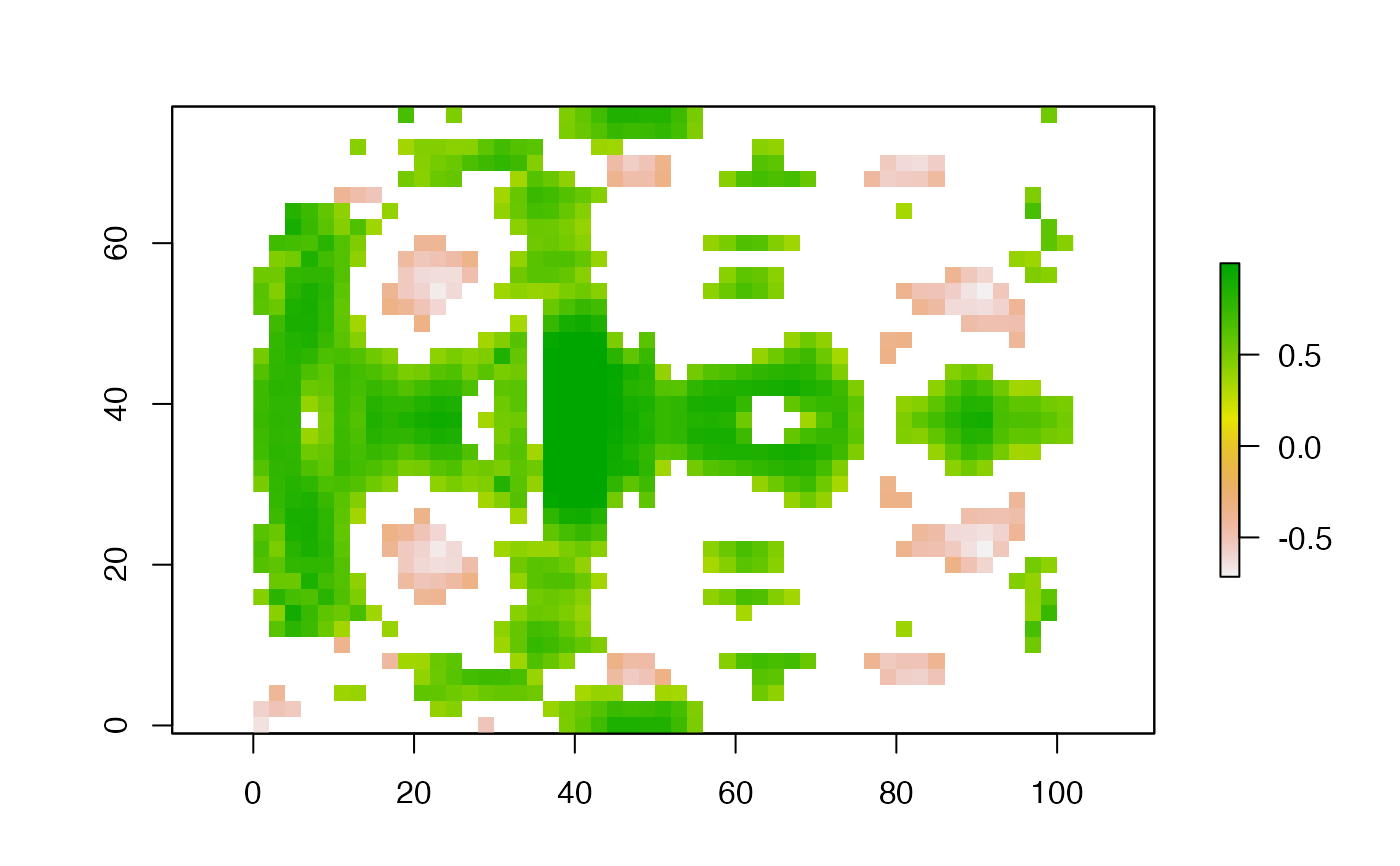Local correlation coefficient
corLocal.RdLocal correlation coefficient for two RasterLayer objects (using a focal neighborhood) or for two RasterStack or Brick objects (with the same number of layers (> 2))
Arguments
- x
RasterLayer or RasterStack/RasterBrick
- y
object of the same class as
x, and with the same number of layers- ngb
neighborhood size. Either a single integer or a vector of two integers c(nrow, ncol)
- method
character indicating which correlation coefficient is to be used. One of
"pearson","kendall", or"spearman"- test
logical. If
TRUE, return a p-value- filename
character. Output filename (optional)
- ...
additional arguments as for
writeRaster
Note
NA values are omitted
Value
RasterLayer
Examples
b <- stack(system.file("external/rlogo.grd", package="raster"))
b <- aggregate(b, 2, mean)
set.seed(0)
b[[2]] <- flip(b[[2]], 'y') + runif(ncell(b))
b[[1]] <- b[[1]] + runif(ncell(b))
x <- corLocal(b[[1]], b[[2]], test=TRUE )
# plot(x)
# only cells where the p-value < 0.1
xm <- mask(x[[1]], x[[2]] < 0.1, maskvalue=FALSE)
plot(xm)
 # for global correlation, use the cor function
x <- as.matrix(b)
cor(x, method="spearman")
#> red green blue
#> red 1.0000000 0.5090865 0.9423498
#> green 0.5090865 1.0000000 0.4608823
#> blue 0.9423498 0.4608823 1.0000000
# use sampleRegular for large datasets
x <- sampleRegular(b, 1000)
cor.test(x[,1], x[,2])
#>
#> Pearson's product-moment correlation
#>
#> data: x[, 1] and x[, 2]
#> t = 12.743, df = 970, p-value < 2.2e-16
#> alternative hypothesis: true correlation is not equal to 0
#> 95 percent confidence interval:
#> 0.3235099 0.4312967
#> sample estimates:
#> cor
#> 0.3786866
#>
# RasterStack or Brick objects
y <- corLocal(b, flip(b, 'y'))
# for global correlation, use the cor function
x <- as.matrix(b)
cor(x, method="spearman")
#> red green blue
#> red 1.0000000 0.5090865 0.9423498
#> green 0.5090865 1.0000000 0.4608823
#> blue 0.9423498 0.4608823 1.0000000
# use sampleRegular for large datasets
x <- sampleRegular(b, 1000)
cor.test(x[,1], x[,2])
#>
#> Pearson's product-moment correlation
#>
#> data: x[, 1] and x[, 2]
#> t = 12.743, df = 970, p-value < 2.2e-16
#> alternative hypothesis: true correlation is not equal to 0
#> 95 percent confidence interval:
#> 0.3235099 0.4312967
#> sample estimates:
#> cor
#> 0.3786866
#>
# RasterStack or Brick objects
y <- corLocal(b, flip(b, 'y'))